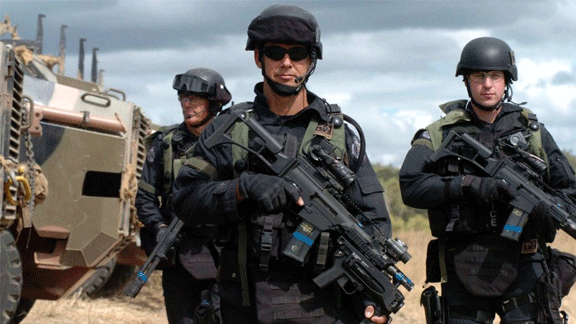Australia doesn’t need defending

What they don’t teach us in school: in early Sydney, a NSW Corps officer told visiting commissioner Bigge that the danger of outside invasion was virtually nil. In fact, he said, the danger was greater from fraternisation between convicts and Irish soldiers.
Expert opinion has always known this. In the 1880s, a British government committee declared: “There is no territory so little liable to aggression as that of Australia.”
The white onslaught against the Aborigines apart, Australia has been too vast and too remote to invade. But to this day we tend to take the “Australian Defence Force” and the billions spent on it for granted. Mistakenly.
One day in the State Library of Victoria, I found a collection of official papers touching on this subject. A government analysis from 1946 dismissed the major powers as non-threats to Australia. Another document from 1953 dismissed the defence of the continent as a “comparatively small problem”.
Fast forward to the Defence 2000 white paper. The authors pretended it was all about defending this country: “Australia’s strategic policy aims to prevent or defeat any armed attack on Australia. This is the bedrock of our security.” But they conceded:
“A full-scale invasion of Australia … is the least likely military contingency Australia might face. No country has either the intent or the ability to undertake such a massive task … A major attack on Australia, aimed at seizing and holding Australian territory, or inflicting major damage on our population, infrastructure or economy, remains only a remote possibility.”
Even the Japanese in the Second World War, as we now know, had no plans to invade here.
The 2013 white paper lists one of four “principal tasks” as being to deter and defeat conventional armed attacks, but it skates quickly to other issues.
Government strategic thinking has been just as consistent when it comes to likely battlegrounds. From colonial days, it has focused on the so-called “arc of instability” that is Australia’s “sphere of influence”.
An Intercolonial Defence Committee recommended in 1896 that “the defence region of Australia be extended to include New Zealand, New Caledonia, New Hebrides, New Guinea and portions of Borneo and Java”.
Defence 2000 identifies Indonesia, New Zealand, Papua New Guinea, East Timor and the south-west Pacific.
Is this about defence? Here the rhetoric is hard to see past, but in older days our rulers were more blunt. When general Gordon circulated a new Australian “general scheme of defence” in August 1913 – only a year from World War I – it included what historian Douglas Newton calls a “shopping list of potential colonial conquests”.
It said Australia must look to the French, German and Dutch possessions to Australia’s north. That was New Caledonia, the Bismarck Archipelago, New Guinea and the Java and Flores Seas. Plans included “the occupation if necessary of probable hostile bases”.
And if you think of it, our battlefields, from Gallipoli to Kokoda, are always offshore.
Government thinking hasn’t changed much in a century. Far from needing defence, Australia remains a threat.